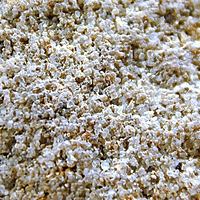 |
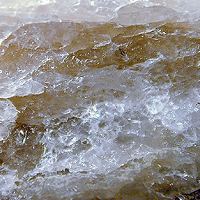 |
| Sandstone | Quartzite |
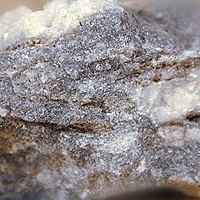 |
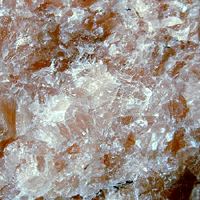 |
| Limestone | Marble |
The metamorphic process can be broken down into two interrelated processes. Mechanical deformation and chemical recrystallization. They almost always proceed in tandem, but one often predominates.
We have seen the mechanical deformation before in the creation of gneiss by putting directional pressure on a granite or diorite. The mechanical deformation squeezes the grains into directional layers with the creation of foliation. This type of metamorphism is called cataclastic. Cataclastic metamorphism basically means that the large grained beginning materiasl are deformed and become elongated.
Concrete is a prime example of chemical recrystallization. When limestone and shale are mixed, and heated to the proper temperature, carbon dioxide and water are expelled, This is the starting material for concrete. When water is added back to the mixture, the resultant quicklime formed form the limestone attacks the glass (created from the shale) and sets up a chemical polymerization of interlocking calcium aluminium silicate. When placed with gravel the resultant aggregate is used world wide for building. It is called Concrete.
Contact Metamorphism is the result of a hot intrusive body invading an external rock. Like a granite dike or sill moving into limestone. The heating of the limestone is somewhat localized as the energy is supplied by the intrusive body and the heat must be conducted slowly outward. The exact composition is dependent upon the amount of water in the granite and/or the amount trapped in the limestone.
The size of the metamorphosed area is directly proportional to the size of the intrusion. The metamorphosed area (if large enough) will create more than one zone and each zone's composition is dependent upon the water available.
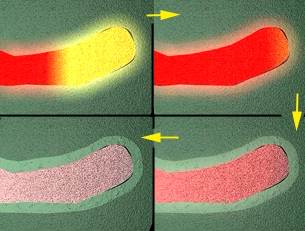
Here is an intrusive body that is beginning to cool, and the area surrounding it is being metamorphosed by the initial heating followed by cooling. The intrusive body will actually contract as it cools and may leave an opening between part of it and the surrounding material.
After sufficient time, weathering may expose the intrusion and since it is granite it will probably be harder and more resistant to the weathering process than either the original limestone or the newly created metamorphic material.
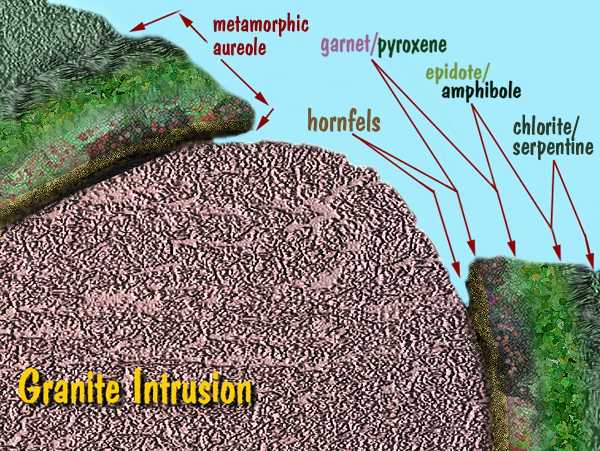
| NEXT | TOC | PREV |